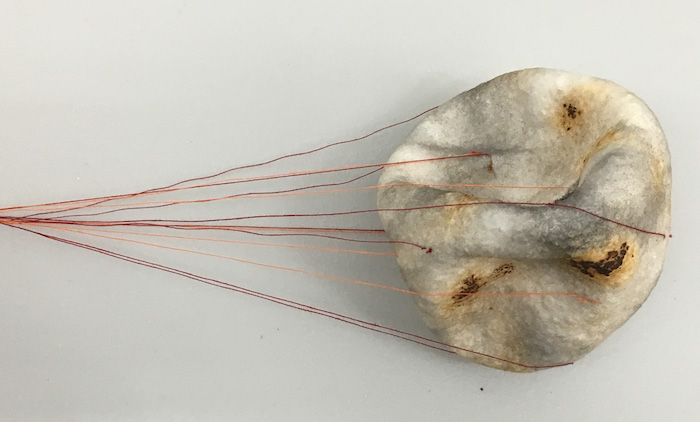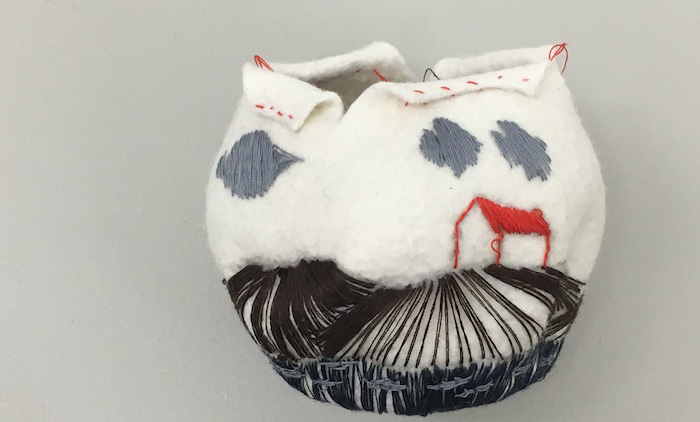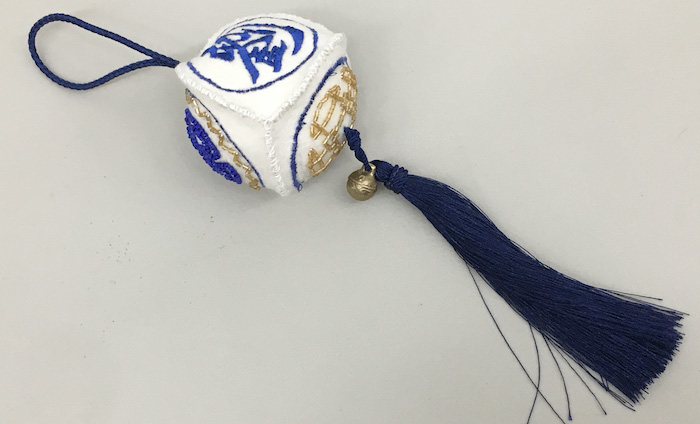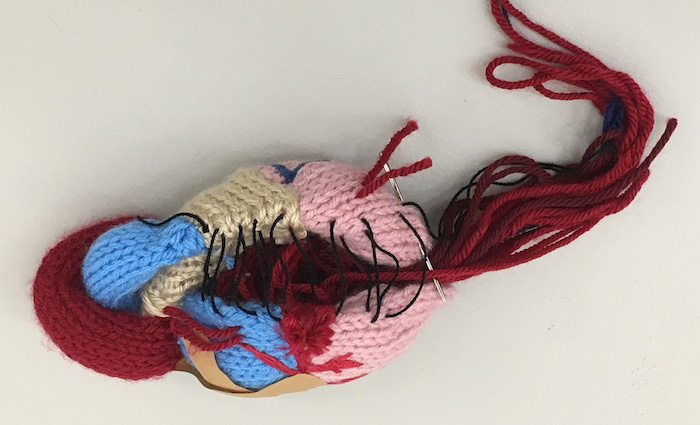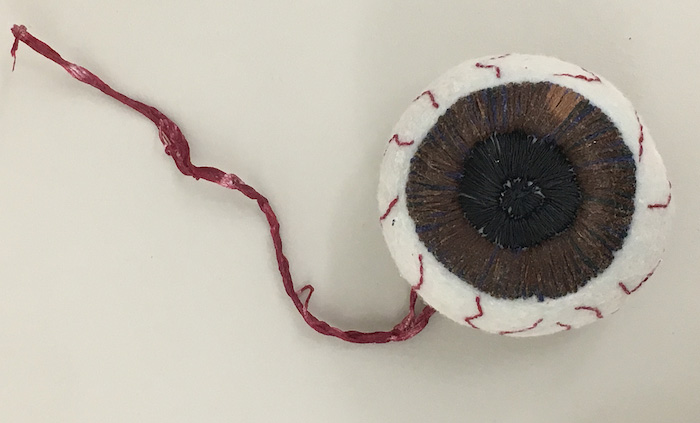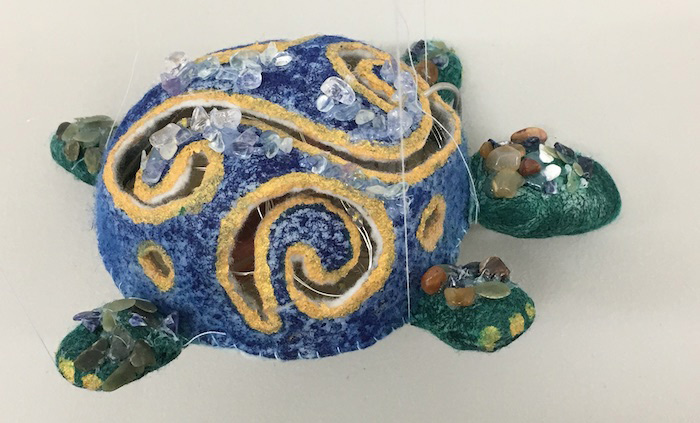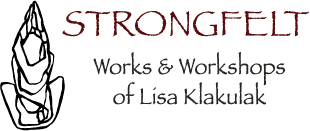Postsecondary Coursework
Felt: Material & Technique for Jewellery
2500 Level Original Coursework | Individual Course Appointment at NSCAD | Online Summer Semester 2020
Contemporary jewellery is characterized by a diversity of materials and processes that question traditional ideas of value and wearability. Exploring jewellery and adornment through the process of felting wool offers new formal and conceptual possibilities. The structural characteristics of wool and the making of felt are highlighted, while referencing traditional fabrication techniques such as casting, cutting sheets, bezeling and joining. Course studies will culminate in three projects: connecting solid felt forms for Under One Skin, attaching solid forms to 2D surfaces and edges for linking/clasping planes to allow for Moving Parts, and incorporating encased objects recognizable by exposed surface and/or contour of form for more complex compositions and material associations for Revealing What’s Inside.
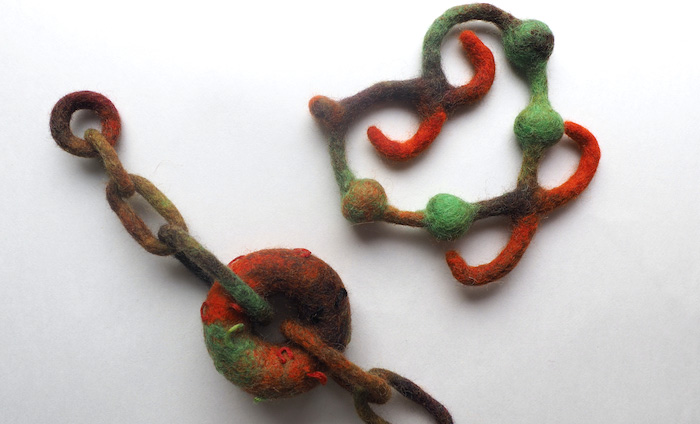
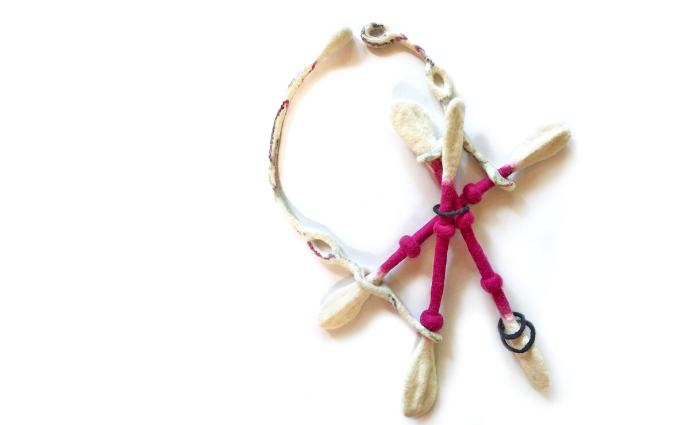
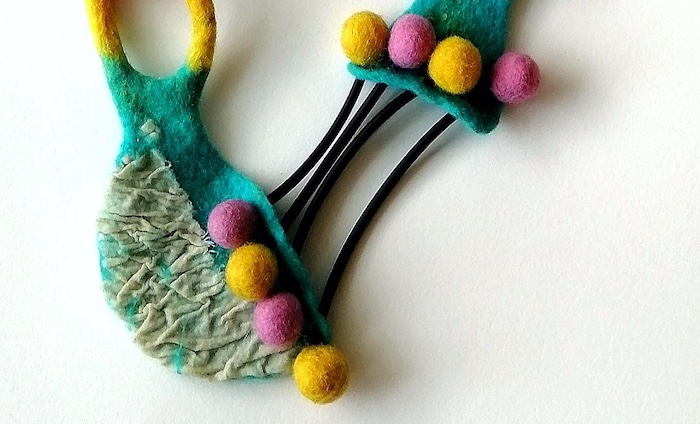
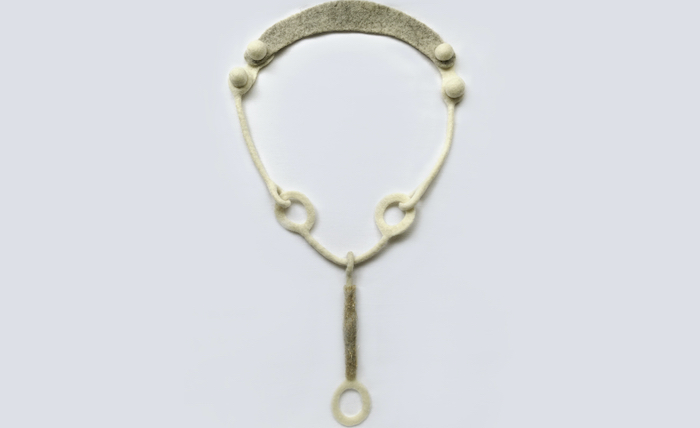
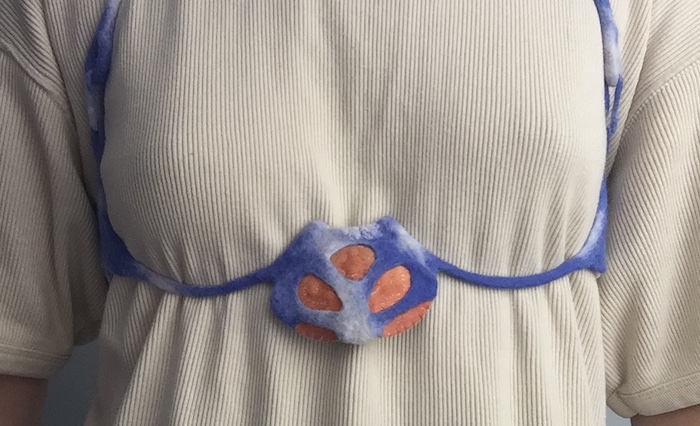
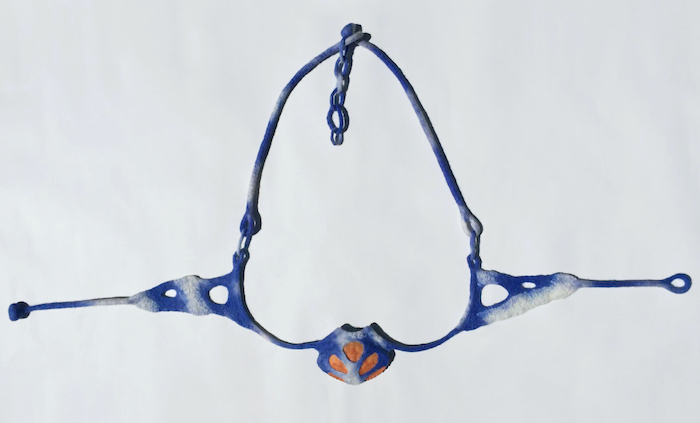
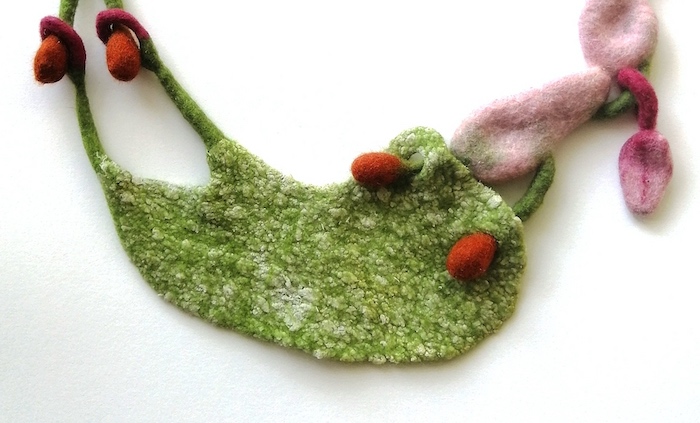
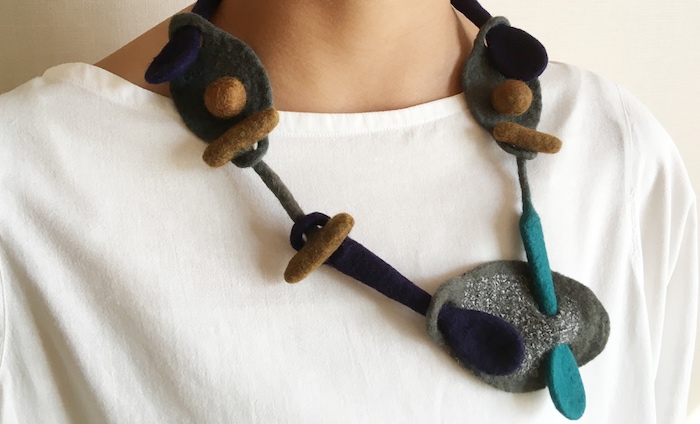
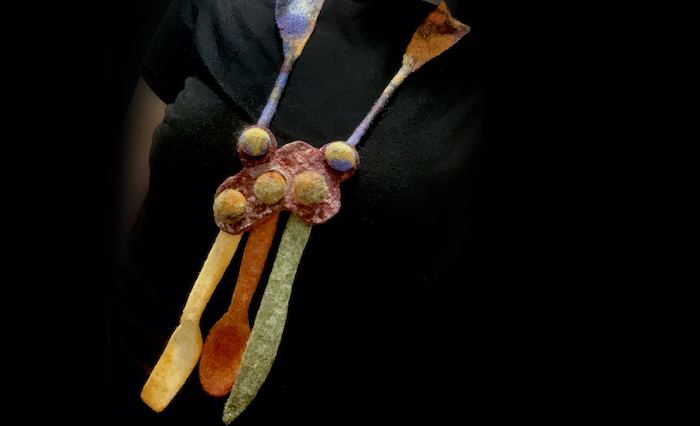
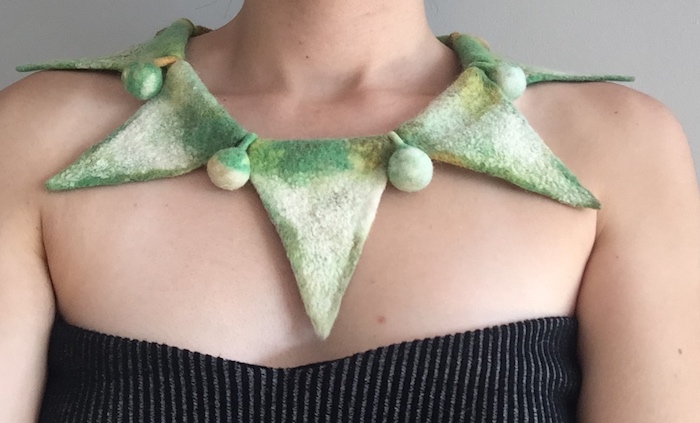
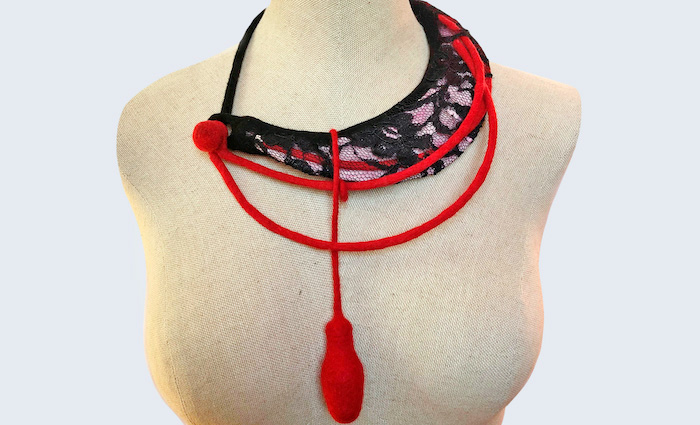
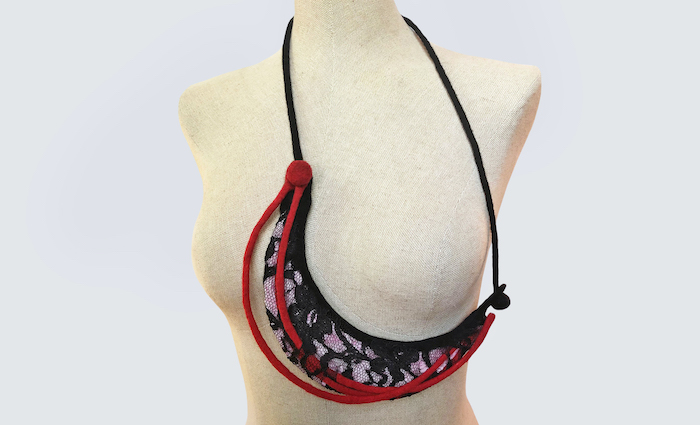
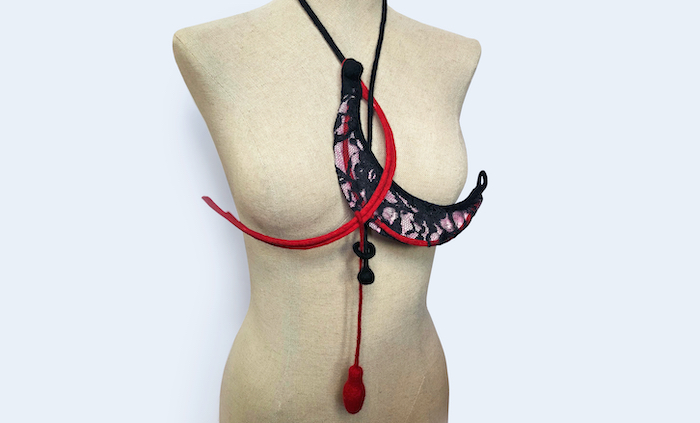
The Language of Felt
3000 Level Original Coursework | Graduate Teaching at NSCAD | Fall Semester 2019
Explore 2D and 3D felting techniques for transforming un-spun wool into matted fabric. Investigate the human story of felt from nomadic antiquities to contemporary applied arts, sculpture, installation and performance. It’s a simple material, yet flexible in its design potential and conceptually loaded. We’ll unpack its language, its metaphors and associations, address industrial implications, all while building manually. Weekly technical studies and topic specific research culminate in a mid-semester 2D project and a final 3D project driven by the students’ concepts and design.
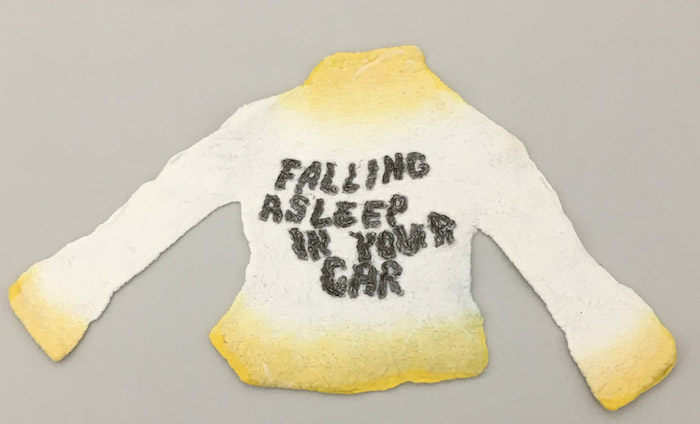
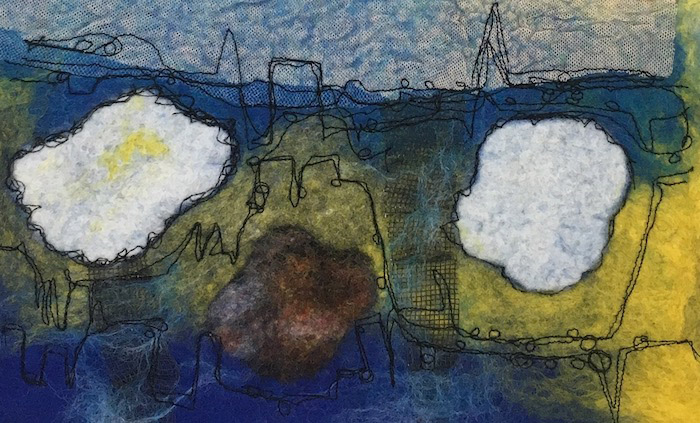
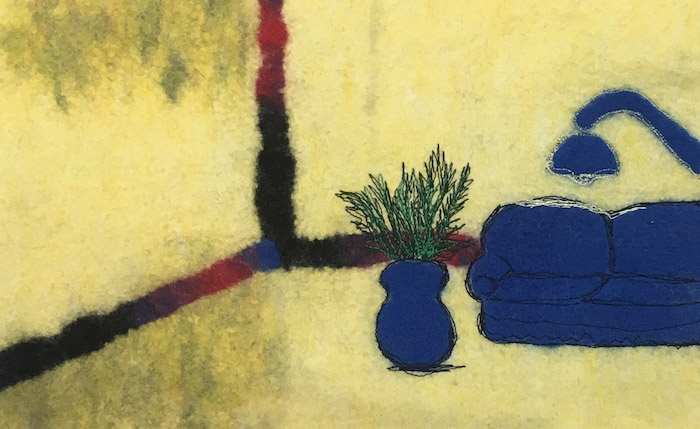
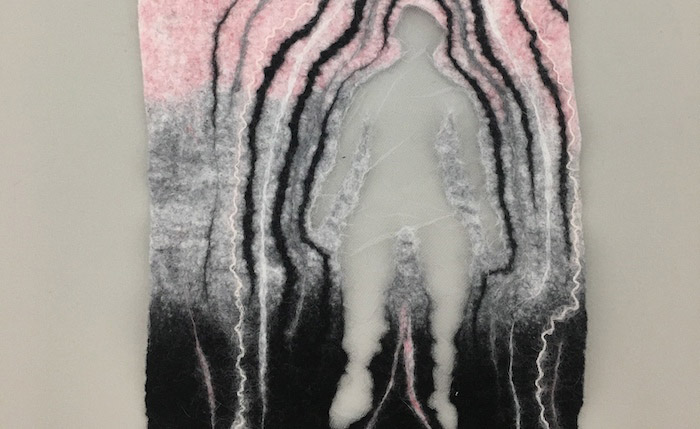
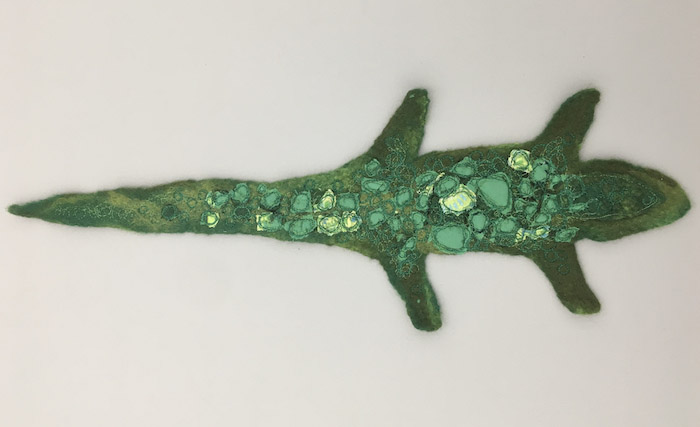
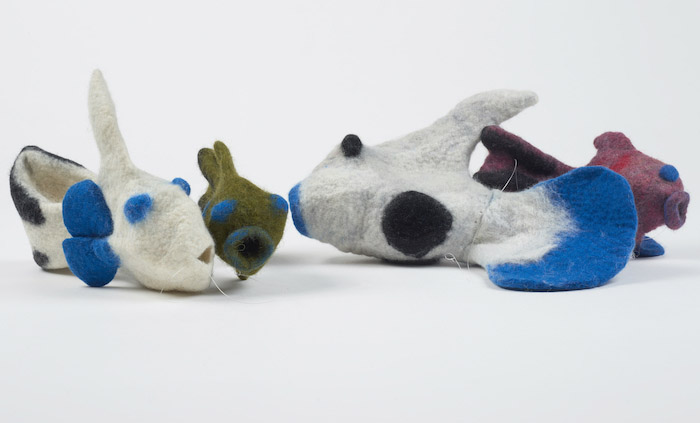
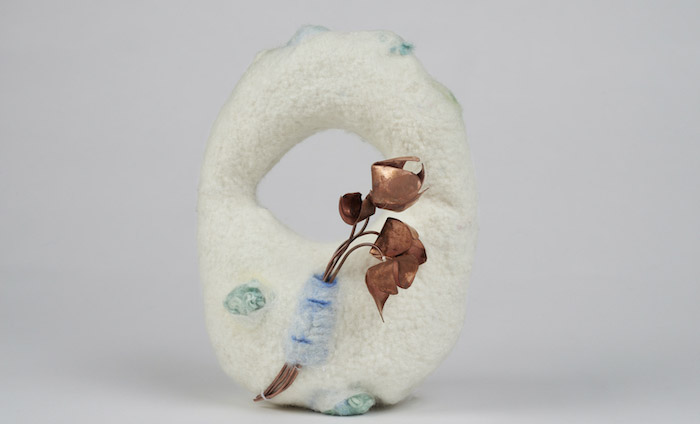
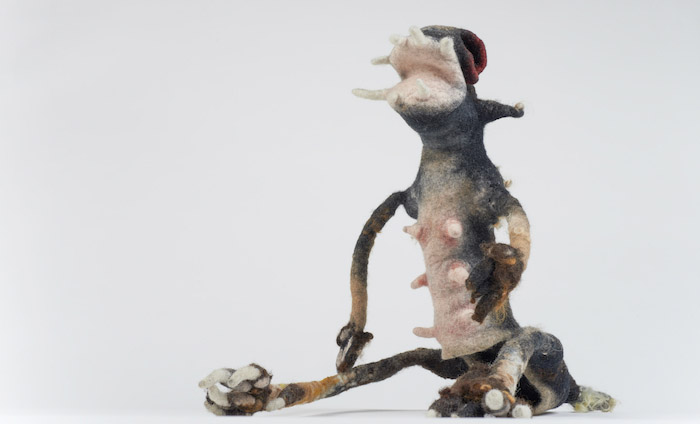
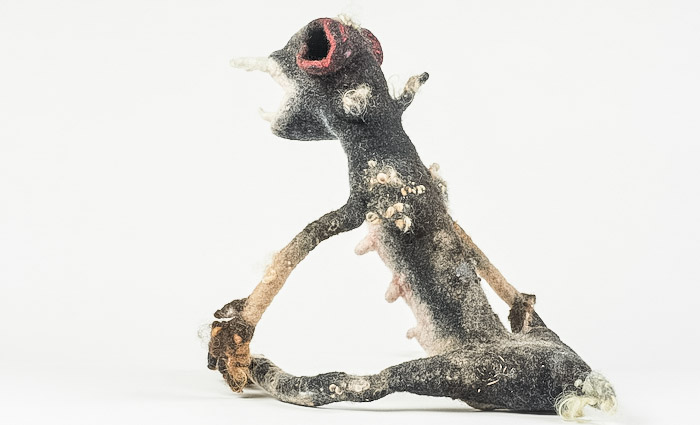
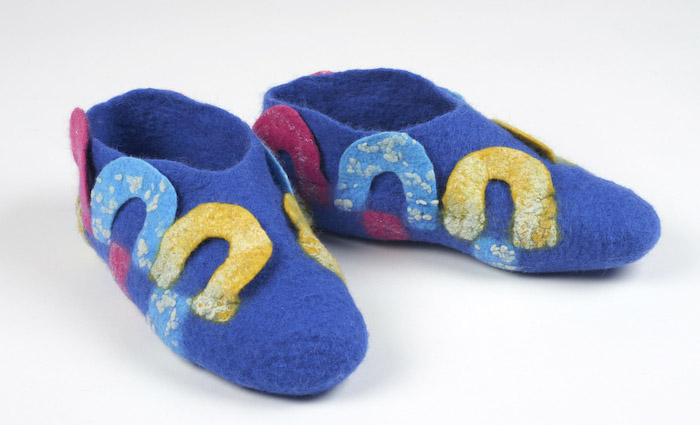
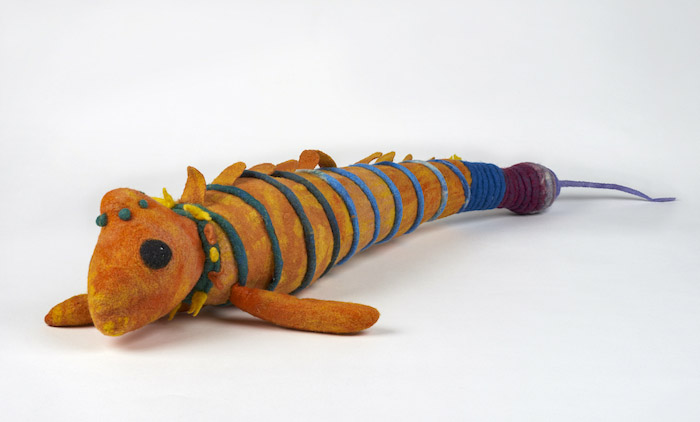
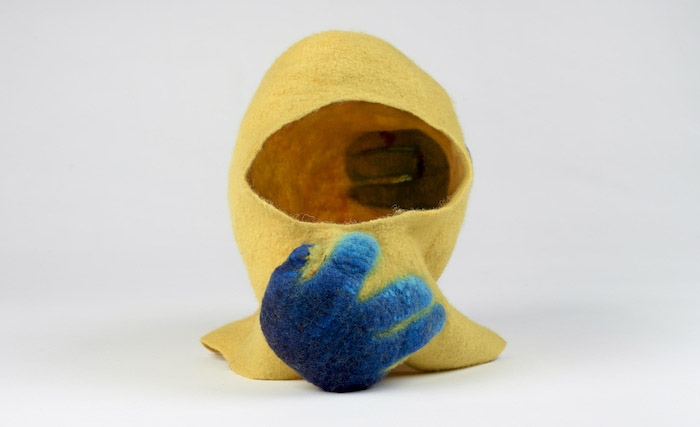
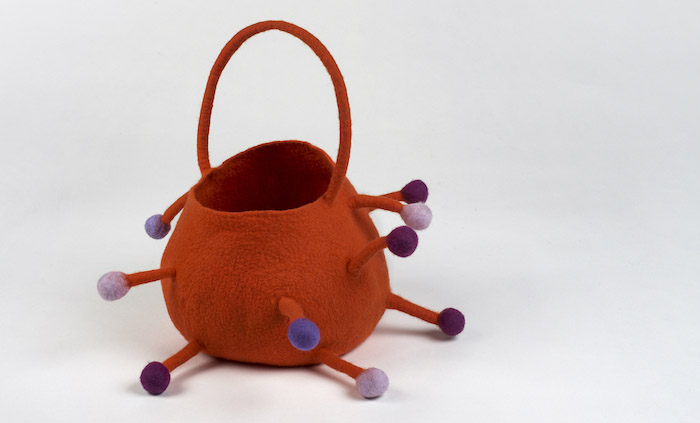
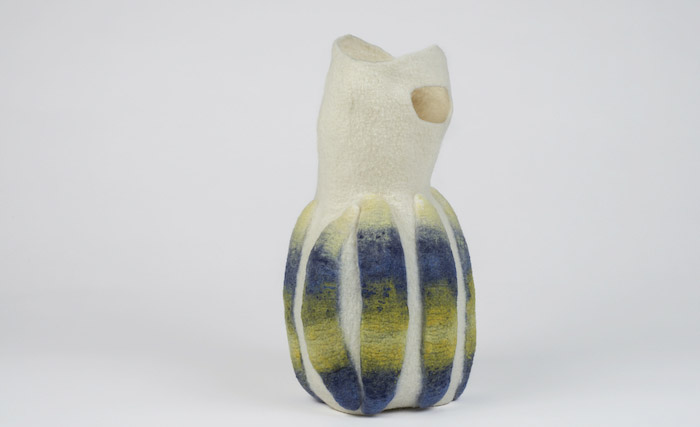
Hollow Felt Forms & Soft Sculpture Manipulation Project
Foundation Original Coursework for Introduction to Modelled Forms
Graduate Teaching Assistant at NSCAD with Professor Rebecca Hannon | Fall Semester 2018
Students are introduced to the properties of wool that allow for the wet felting process while constructing a hollow sphere of felt using a 2-D circular template encased in fiber. Student then employ at least two modes to modify their sphere (cut, fold, twist, crumple, puncture, roll, burn, saturate, stiffen, dip, fill, stitch, attach, hang, stretch, abrade, staple, glue, tape, bind, draw, colour) while considering the materials origin, contexts of human use, and material relationship to the human body.
